
Iain Banks was a Scottish author, writing mainstream fiction as Iain Banks and science fiction as Iain M. Banks, adding the initial of his adopted middle name Menzies. After the success of The Wasp Factory (1984), he began to write full time. His first science fiction book, Consider Phlebas, appeared in 1987, marking the start of the Culture series. His books have been adapted for theatre, radio, and television. In 2008, The Times named Banks in their list of "The 50 greatest British writers since 1945".
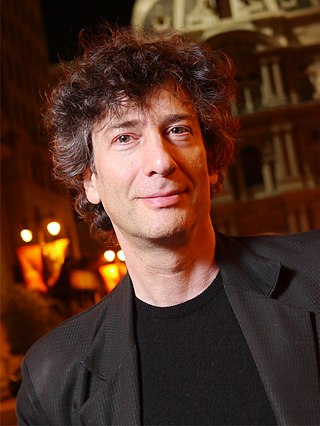
Neil Richard MacKinnon Gaiman is an English author of short fiction, novels, comic books, graphic novels, audio theatre, and screenplays. His works include the comic book series The Sandman and the novels Good Omens, Stardust, Anansi Boys, American Gods, Coraline, and The Graveyard Book. He co-created the TV series adaptions of Good Omens and The Sandman.
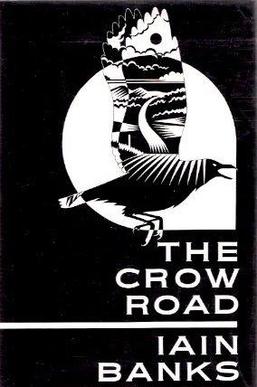
The Crow Road is a novel by the Scottish writer Iain Banks, published in 1992.

Consider Phlebas, first published in 1987, is a space opera novel by Scottish writer Iain M. Banks. It is the first in a series of novels about an interstellar post-scarcity society called the Culture.
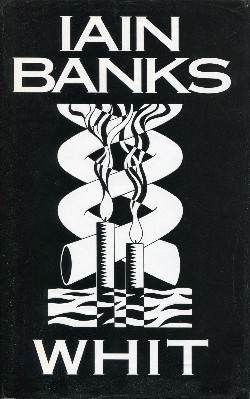
Whit, or, Isis amongst the unsaved is a novel by the Scottish writer Iain Banks, published in 1995. Isis Whit, a young but important member of a small, quirky cult in Scotland, narrates. The community suspects that Isis' cousin Morag is in danger, and sends Isis out to help.

Good Omens: The Nice and Accurate Prophecies of Agnes Nutter, Witch is a 1990 novel written as a collaboration between the English authors Terry Pratchett and Neil Gaiman, who in turn were dubbed "Double Trouble" by the British press.
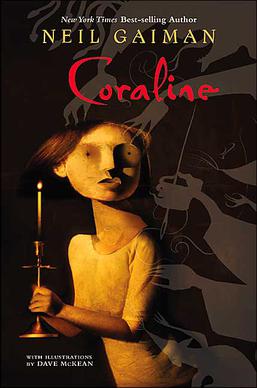
Coraline is a 2002 British dark fantasy horror children's novella by British author Neil Gaiman. Gaiman started writing Coraline in 1990, and it was published in 2002 by Bloomsbury and HarperCollins. It was awarded the 2003 Hugo Award for Best Novella, the 2003 Nebula Award for Best Novel, and the 2002 Bram Stoker Award for Best Work for Young Readers. The Guardian ranked Coraline #82 in its list of 100 Best Books of the 21st Century. It was adapted as a 2009 stop-motion animated film, directed by Henry Selick under the same name.

Eric Frank Russell was a British writer best known for his science fiction novels and short stories. Much of his work was first published in the United States, in John W. Campbell's Astounding Science Fiction and other pulp magazines. Russell also wrote horror fiction for Weird Tales and non-fiction articles on Fortean topics. Up to 1955 several of his stories were published under pseudonyms, at least Duncan H. Munro and Niall(e) Wilde.
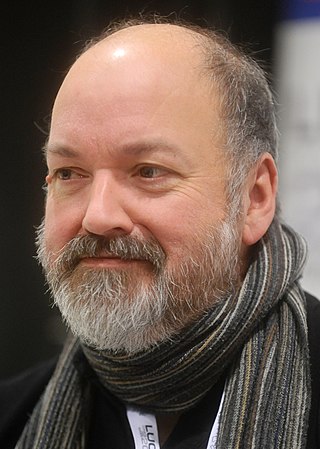
David McKean he's an English artist. His work incorporates drawing, painting, photography, collage, found objects, digital art, and sculpture. McKean has illustrated works by authors such as Neil Gaiman, Grant Morrison, Heston Blumenthal, Ray Bradbury and Stephen King. He has also directed three feature films.
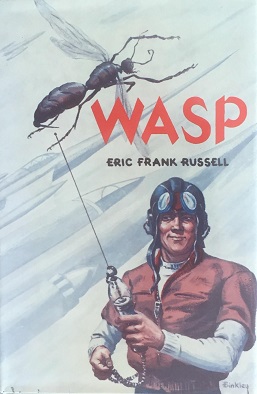
Wasp is a 1957 science fiction novel by English author Eric Frank Russell. Terry Pratchett stated that he "can't imagine a funnier terrorists' handbook." Wasp is generally considered Russell's best novel.

The Sandman: Endless Nights is a graphic novel written by Neil Gaiman as a follow-up to his Sandman series. The book is divided into seven chapters, each devoted to one of the Endless, a family of siblings who are physical manifestations of the metaphysical concepts Dream, Death, Desire, Destruction, Delirium, Despair and Destiny. It was published by DC Comics in 2003. It won the Bram Stoker Award for Best Illustrated Narrative. It is also the first comic book to ever be on the New York Times Bestseller List.

A Maggot (1985) is a novel by British author John Fowles. It is Fowles' sixth major novel, following The Collector, The Magus, The French Lieutenant's Woman, Daniel Martin and Mantissa. Its title, as the author explains in the prologue, is taken from the archaic sense of the word that means "whim", "quirk", "obsession", or even a snatch of music. Another meaning of the word "maggot" becomes apparent later in the novel, used by a character to describe a white, oblong machine that appears to be a spacecraft. Though the author denied that A Maggot is a historical novel, it does take place during a precise historical timeframe, April 1736 to March 1737, in England. It might be variously classified as historical fiction, mystery, or science fiction. Because of the narrative style and various metafictional devices, most critics classify it as a postmodern novel.

Complicity is a novel published in 1993 by Scottish author Iain Banks.
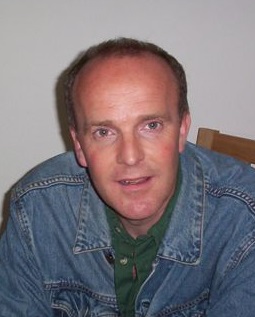
Jamie Rix is an English children's author, television comedy writer, and media producer. He is best known for the book series Grizzly Tales for Gruesome Kids and The War Diaries of Alistair Fury; both were adapted into award-winning children's television programmes.

The Witch of Edmonton is an English Jacobean play, written by William Rowley, Thomas Dekker and John Ford in 1621.

Rat is a 2000 comedy film directed by Steve Barron and starring Imelda Staunton and Pete Postlethwaite. The film focuses on the transformation of a working-class man into a rat and how his family copes with the startling change. The film's scenario is partly based on Franz Kafka's The Metamorphosis.
The Culture series is a science fiction series written by Scottish author Iain M. Banks and released from 1987 through to 2012. The stories centre on The Culture, a utopian, post-scarcity space society of humanoid aliens, and advanced superintelligent artificial intelligences living in artificial habitats spread across the Milky Way galaxy. The main themes of the series are the dilemmas that an idealistic, more-advanced civilization faces in dealing with smaller, less-advanced civilizations that do not share its ideals, and whose behaviour it sometimes finds barbaric. In some of the stories, action takes place mainly in non-Culture environments, and the leading characters are often on the fringes of the Culture, sometimes acting as agents of Culture in its plans to civilize the galaxy. Each novel is a self-contained story with new characters, although reference is occasionally made to the events of previous novels.
Eunuchs have appeared in many films, works of literature, and in popular culture.

Joyland is a novel by American writer Stephen King, published in 2013 by Hard Case Crime. It is King's second book for the imprint, following The Colorado Kid (2005). The first edition was released only in paperback, with the cover art created by Robert McGinnis and Glen Orbik. A limited hardcover edition followed a week later. The novel was nominated for the 2014 Edgar Award for Best Paperback Original.
Gary Lloyd is a Canadian-born British composer and producer. He has composed music for productions in theatre, contemporary dance, television drama and documentary, film, art installation, son et lumiere, narrative/music works, and orchestral concert performances. He also works as a record producer, and lectures on aspects of music. He is a graduate of the University of Chester where he studied mathematics, fine art and history of art, and psychology.

















